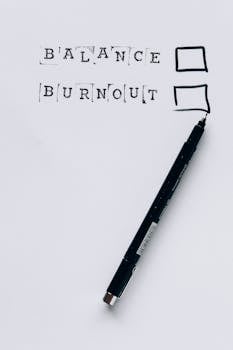Career
Resume for your first job: a simple, effective template
Discover the best template and tips to create your first job resume. Stand out with a recruiter-friendly format, tailored skills, and examples—even if you have no experience yet.
Advertisement
Landing your first job means transforming blank space into real opportunity. You’ll shape experiences and hobbies into a first job resume that speaks for you, even if you lack paid roles.
Employers look for signals you have potential, not a perfect work record. Every detail, from layout to language, can show them you’re ready to learn and contribute.
Explore this guide to build a first job resume that opens doors. Step by step, you’ll see what employers value, how to capture attention, and actionable tips for every section.
Choosing Resume Formats to Present Your Strengths
Presenting your story clearly helps employers see fit. The format you choose influences what stands out first, which is vital for your first job resume.
Picking the right template makes strengths pop, even with little paid experience. Choose based on what showcases your talents best.
Understanding Format Types and Choosing Purposefully
A chronological resume lays out roles in order, but can reveal experience gaps. It helps when you have relevant jobs, internships, or long-term volunteering.
A functional resume moves skills to the top, letting you highlight project work, school activities, and transferable abilities. This works well for a first job resume.
Combination resumes mix both, allowing a skills overview with a brief job list. The choice depends on what’s strongest in your background.
Scenario: Picking What Works for You
Imagine Emma with sports team leadership but no jobs. A functional format lists leadership and communication up front, helping recruiters spot her soft skills instantly.
Now picture Chris, who’s worked summer retail positions. A combination resume brings his recent jobs and tech projects side-by-side, showing well-rounded readiness.
Ask, “Does my headline help a stranger guess what I could learn fastest on day one?” Shape your first job resume format to support this answer.
| Format | Best For | Key Feature | When to Use |
|---|---|---|---|
| Chronological | Those with paid jobs | Lists experience by date | Recent, stable roles |
| Functional | Students, new grads | Highlights skills upfront | Project or activity entries |
| Combination | Mixed work/activity | Skills and timeline | Freelance or projects |
| Targeted | Specific job | Custom for each employer | Tailored applications |
| Infographic | Design fields | Visual, creative | Creative industry roles |
Writing a Headline That Gets Noticed Fast
Your headline focuses the recruiter’s attention on your main value. This is the first step to making your first job resume start strong.
In seven words or less, explain what you can do. This line goes just below your name and sets the stage for everything that follows.
Tips for Strong, Targeted Headlines
Action words catch attention: try “Detail-Oriented High School Graduate Seeking Data Internship” over listing your school alone.
Add a touch of what you want. For example, use “Aspiring Marketing Assistant Skilled in Social Media” if you’ve led a club Instagram.
- Start with your education or title (e.g., High School Graduate, Student Leader), so recruiters know your base immediately for your first job resume.
- Include an industry or strength (Aspiring Retail Associate, Customer Service Focus), to show your career interest and hint at relevant skills.
- Use an active verb to signal energy and readiness (Motivated, Enthusiastic, Driven), which signals employers you want to learn at your first job.
- Mention a special skill if space allows, like “Bilingual” or “Microsoft Excel,” offering immediate value for the first job resume in busy industries.
- Avoid “Seeking any opportunity” and instead target a type of work, for a headline that shows purpose and preparation instead of general hope.
A clear, purposeful headline lets recruiters quickly imagine you fitting their entry-level needs.
Sample Headlines for Different Scenarios
For a food service role, a strong headline is: “Energetic Student Ready for Fast-Paced Restaurant Teams”.
If you helped with school news, try: “Aspiring Writer Experienced in Deadline-Driven Projects”.
- Lead with what you want and can do, not just what you’ve done—“Ready to Help Businesses Run Smoothly: Entry-Level Support” describes intention.
- Highlight group skills: “Collaborative Team Player Focused on Customer Needs”, which instantly signals reliability for your first job resume reviews.
- Project strengths that match real job requirements—“Organized Self-Starter with Proven Event Planning Experience” addresses employer needs head-on.
- Mention certifications or key skills only if they’re relevant and recent, like “Certified First-Aider Ready for Caregiver Roles” for your first job.
- Keep every headline specific; avoid “Jack of All Trades”—pin down the value you want to offer on your first job resume to keep things sharp.
Adjust your headline every time the target role changes, making each application feel thoughtfully prepared.
Listing Education and Training to Build Trust
Employers need to trust you have the basics for success. Listing education the right way builds that foundation and strengthens your first job resume.
Put your highest or most recent education first. Add dates, locations, and, if strong, your GPA or a related project.
Including Coursework, Certifications, and Special Projects
Relevant coursework (like “Business Communication” or “Basic Coding”) shows learning that fits the job. Select up to four and use bullet points for clarity.
Training—like CPR, Safe Serve, or MS Office certificates—belongs right under education, clearly labeled so recruiters spot these extras quickly.
Project-based learning, such as science fairs or art shows, demonstrates practical skills. Briefly describe your project, what you accomplished, and any recognition received.
Showcasing Achievements, Not Just Participation
Instead of “Participated in School Government,” write, “Elected Treasurer; managed $200 fund.” Small wins on a first job resume signal drive.
If you’ve won awards, mention year and what you did to earn them. “Placed 1st, Regional Science Fair 2023” says more than “science award.”
Unpaid activities, like leading a fundraiser or tutoring, belong in education if you haven’t held jobs—describe results: “Raised $500 for local library.”
Describing Activities and Volunteer Experiences Effectively
For your first job resume, unpaid experiences can show work ethic and responsibility. Write these like job descriptions with results and clear skills.
Highlight leadership, teamwork, or reliability by describing projects in detail, not just listing where you volunteered—include numbers or impact.
Translating Volunteer Work Into Professional Language
Instead of “Helped at park cleanups,” write, “Coordinated three weekend park cleanups with 10 peers; reduced litter by 40 percent.” This sounds concrete and outcome-driven.
Describe the task, any roles you held (leader, organizer, mentor), and what skills were gained, like customer service, planning, or communication, for your first job resume.
Show time commitment: “Volunteered 40 hours at city library” demonstrates reliability and dedication, traits valued by employers reviewing a first job resume.
Listing Activities That Show Transferable Skills
Include sports, music, clubs, or part-time gigs where you solved problems, communicated, or worked in teams. Use action verbs to add energy to every example.
If you organized an event, say, “Planned and promoted school concert attended by 200 students.” For fundraising, try, “Raised $700 for animal shelter through peer campaign.”
For club participation: “Served as Debate Club Secretary, documenting meetings and updating social channels.” Make every activity relevant to the job’s needs.
Tailoring Skills and Keywords for Job Matches
Tailoring your first job resume for each application increases your interview chances. Start by pulling keywords from the job description or company website.
Mirror employer language when listing your skills, just like matching a lock with a key. Select five to eight skills, balancing soft and hard abilities.
Grouping and Prioritizing Relevant Skills
For a retail role, highlight “Customer Interaction,” “Cash Handling,” and “Problem Solving.” For data entry, “Attention to Detail,” “Typing Speed,” and “Spreadsheet Management” stand out.
Prioritize skills that match both the job ad and your experiences, even if they were developed out of school or through hobbies, on your first job resume.
Organize them in a bulleted list, not paragraphs. This helps recruiters scan quickly, finding your best fit in seconds—a huge advantage for any first job resume.
- Read the job ad line by line and pull 2–3 phrases every time you apply, updating your skills section to stay relevant and sharply targeted for that first job resume.
- Include both soft (communication, teamwork) and hard skills (Excel, coding). Match order to the employer’s list, so their priorities come first in your first job resume.
- Use outcome language—replace “Hard Worker” with “Consistently Met Project Deadlines,” showing actual achievement on a first job resume.
- Skip skills not needed for the job, even if you’re proud of them. Keep every line relevant to maximize space and impact for your first job resume.
- Refresh your list regularly based on interviews or feedback, aiming to align your resume perfectly every time you send a new application.
Consistent tailoring shows you pay attention and take the process seriously.
Including Personal Interests That Build Human Connection
Relevant interests personalized for a role can add warmth to your first job resume. They also give recruiters easy topics for interview small talk.
Pick hobbies that show positive traits: teamwork, creativity, dedication. For example, mention organizing a community sports event or creating digital art.
Phrasing Interests With Purpose and Relevance
Be specific—replace “music” with “Organized monthly charity open mic nights.” Instead of “video games,” use “Competed in statewide eSports tournament, built strategies and digital teamwork.”
List interests that show a connection to job skills. For a customer service role, “Volunteered as event greeter, welcoming over 100 attendees, keeping energy high.”
Focus on showing, not telling, using crisp phrases: “Led hiking club to plan and map campus trails, encouraging safety and team coordination.”
- Highlight leadership (“Led Robotics Club; placed in top 3 at state competition”). Connect this to job skills needed for your first job resume.
- Pick interests with built-in responsibility, like “Tutored peers after school for 20 hours.” Show maturity and real commitment each time.
- Include creative outlets (“Produced short films and posted on YouTube with over 2,000 views”). This demonstrates initiative and digital savvy.
- List athletic participation (“Varsity Soccer; managed group practices, set fundraising goals”). Relate this to teamwork focus for jobs requiring collaboration.
- Choose items with talking-point potential, such as “Designed flyers for community events.” These give you quick wins during interviews and add color to your first job resume.
Sharing the right interests makes you memorable outside regular qualifications.
Final Steps: Formatting, Proofreading, and Submitting Confidently
Finishing touches transform a draft into a crisp, job-ready document. Get everything neat, easy to read, and free from distracting errors on your first job resume.
Save your file as PDF unless employers specify otherwise; this keeps your fonts and layout intact across devices and printers.
Quick-Check Formatting Rules for a Polished Look
Keep margins to one inch, font size between 10 and 12 points, and use simple, readable fonts like Arial, Calibri, or Times New Roman for your first job resume.
Bold only section headings, not job titles or dates. Use alignment for clarity: left align all main text, right align dates, keep bullets tidy and consistent.
Double-check line spacing—single or 1.15 is best. Run a spelling and grammar check, then print or preview PDF to catch issues a screen might hide.
Submission Best Practices and Following Up
Name files clearly: “FirstName_LastName_Resume.pdf” so hiring teams don’t lose your document among others. Use the same file name in every email or upload for clarity.
If emailing, keep your message short: “Attached is my first job resume and cover letter for the Retail Associate role. Thank you for considering my application.”
Track submissions and mark employers who open or reply. If silent for two weeks, send a short follow-up: “I’m checking on the Retail Associate role—eager to learn next steps.”
Building Your Confidence With Every Draft
Every time you fine-tune your first job resume, your narrative becomes clearer. Small tweaks build confidence, showing you understand exactly what employers need from new talent.
Choosing strong words, organizing content smartly, and tailoring for each role gives you control, even if the process feels new. Employers respond to purpose and clarity, not just lists.
Practicing these steps builds your career muscles, so each application feels sharper than the last. Let each interview, feedback, or rejection guide your next improvement.





